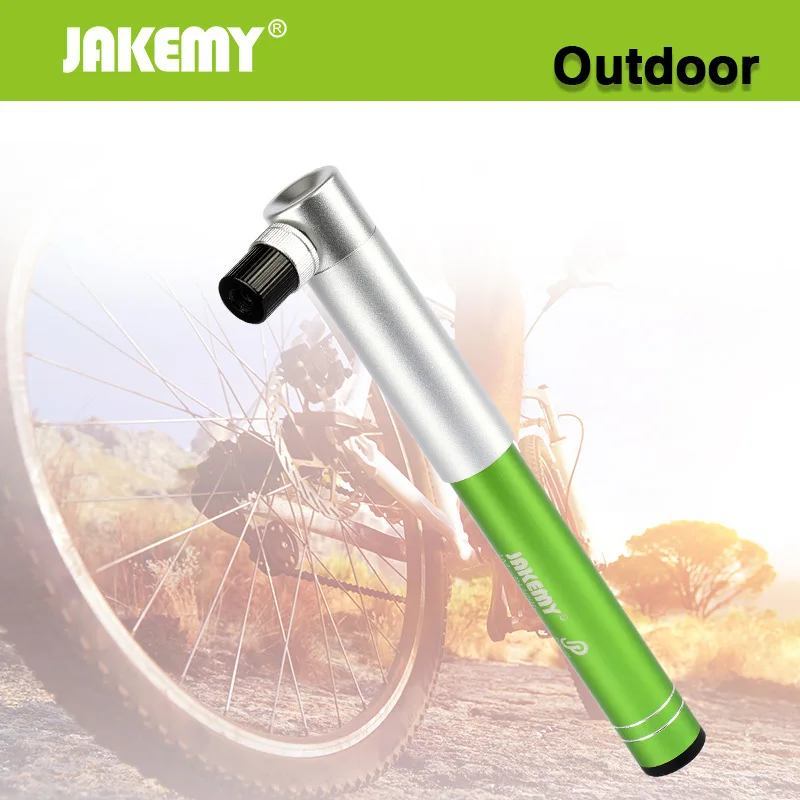Bikeshepherd.org is reader-supported. When you buy through links on our site, we may earn an affiliate commission. Learn more
by Patrick Wise
A cyclist or a biker for that matter needs to be alert and prepared in case of emergencies on the road. As a bike enthusiast myself, I have been looking for ways to learn different skills that will be useful if any problems arise during the ride. One skill that I have developed over the years is how to put air in bike tires without a pump.
This is a skill that will be helpful if and when you accidentally forgot your pump when doing any biking activities. Also, if you do not own a portable pump right now, then learning some of the methods below will certainly help you as a biker. However, please be reminded that most of the process requires some do-it-yourself skills and a little know-how.
Please be guided accordingly.
Contents
Putting the right amount of air in your tire is important in terms of your safety and getting the best performance of your bike. Having it inflated with the right amount of air will also increase the lifespan of your tire than what is expected.
But what if you need a pump in the middle of the ride and you do not have one in your position? You need to use one of the methods below to make your tire inflated properly:
Using C02 CartridgesThis method is arguably the most popular alternative to inflating your bike’s tire without using a pump. The best thing about C02 is it’s portable, comes in small size, and light which makes it easy to bring when biking.
But please take note that this is just a temporary solution to inflating your tire and should be used only for emergencies. The best way to inflate is still to look for a regular pump to put air in your tire. Here are the steps when inflating your tire with a C02 cartridge.
Here are the steps when inflating your tire with a C02 cartridge.
Step 1: Removing the Cap
The first thing to do is remove the cap of the cartridge. The right way to do it to turn the cap counterclockwise using your bare hands. Retrieve the inflator fitting and the cartridge from the tube by tipping the other side of the inflator up.
Step 2: Check your Tire
After opening the cap, you may proceed to check your tire if it is flat or not. You also need to check the tube if it is in good condition. Otherwise, if it is broken, you might end up with another flat tire just a few seconds of putting air into it. You can also adjust the tire so that it is position properly on the rim before putting the air.
Step 3: Filling the Tire with Air
Put the C02 cartridge into the inflator fitting by inserting it with your hand and pushing it clockwise until you will hear and notice an airflow. Hold it for a few seconds depending on the size of your tire.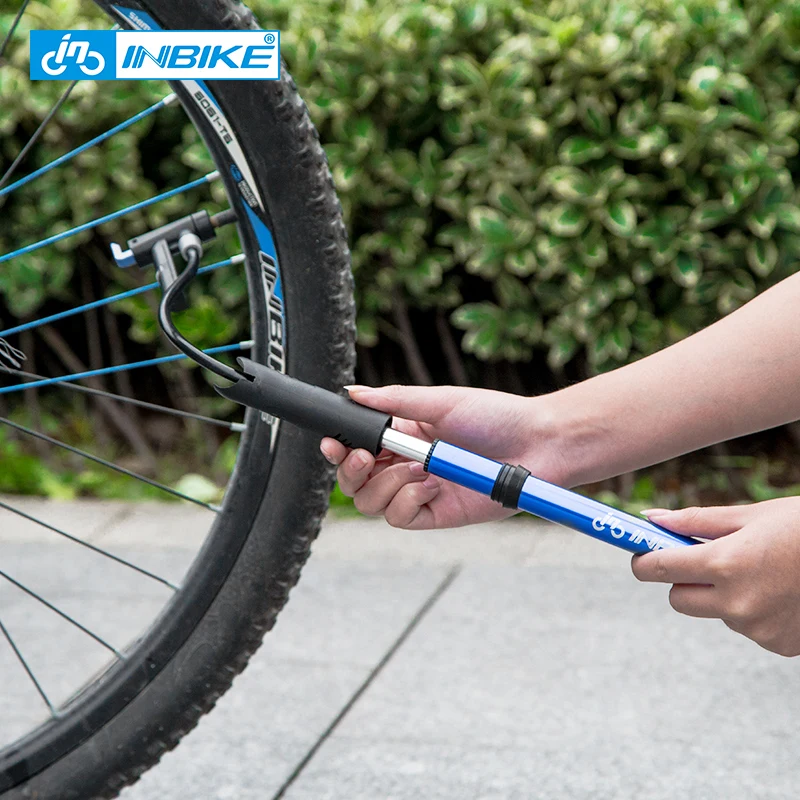 If the inflation level is enough, turn the cartridge counterclockwise to stop the air from flowing.
If the inflation level is enough, turn the cartridge counterclockwise to stop the air from flowing.
Step 4: Removing the Cartridge from the Inflator Fitting
Remove the cartridge off the valve by unscrewing it from the inflator fitting. Close the nozzle while pulling the nozzle away from the valve. The right way to do it is to pull it straight to avoid damaging the inflator tube of your tire.
Step 5: Replacing the C02 with Regular Air
The C02 is just a temporary remedy and should be replaced immediately as soon as there is a regular pump that is available. Since C02 disappears quickly, replacing it with normal air should be your priority.
Manually Inflating the TireIt may not be the most popular way but if there is no other option, putting air to the tire manually is another way to do it. It may require a lot of effort on your part but this method can be done. But first thing first, you need to clean the tire and the valve before doing this method.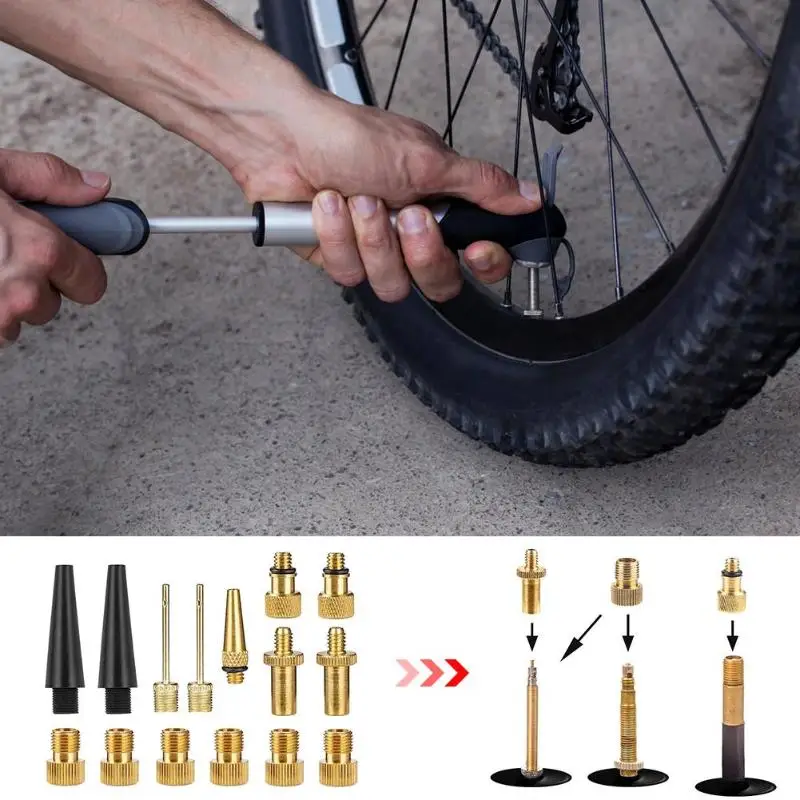 Any piece of cloth can be used to clean the tire and the valve but make sure to clean it completely.
Any piece of cloth can be used to clean the tire and the valve but make sure to clean it completely.
Once the tire and the valve are clean, begin the inflation process by blowing some air into the tire. After putting in some air, check the tire if it is aligned with the rim. If it is not, make sure to make the necessary adjustments to make it in the right position. After that, continue to blow into the valve until you put enough air into the tire.
For sure, this method will take time and need you to exert a lot of effort. But to be able to succeed, do not be discouraged. From time to time, check the alignment of the tire and the rim and adjust accordingly.
Make a DIY Inflating ToolThis method requires a lot of creativity and imagination on your part. Inflating a tire can be done without using a pump by using an inflating tool that is made by you. This method requires some Do-It-Yourself skills and your creativity to pull it off. To inflate the tire using this tool, you will need to transfer the air from one tire to the other.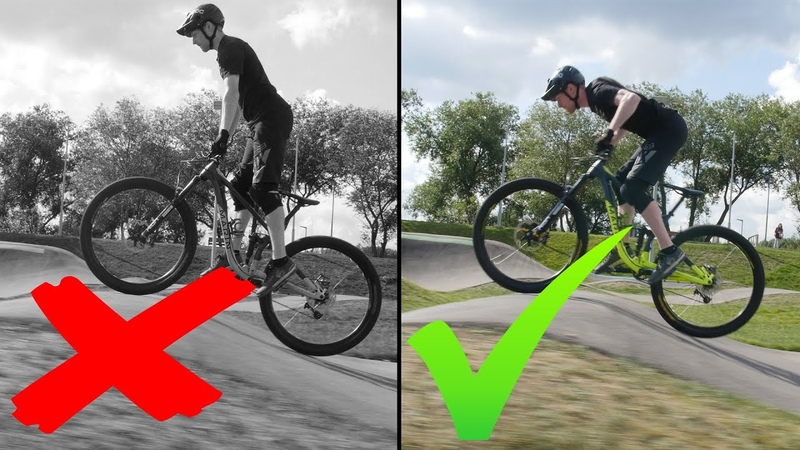
In making the inflating tool, you will need a siphon hose which will be used to transfer the gas to the tire. Then, get a pair of Schrader valves which will be attached to both sides of the hose. One valve must be a clip-on variety so that it can be attached to another side of the tire while you do the inflation process. Insert the two valves at both ends of the hose and secure it with a clamp to prevent it from detaching.
So, how do you pump a bike tire without a pump through this method? You can attach the other side of the hose to the other tire of your bicycle with air and transfer the air to the one that needs inflation. Another way is to get the air from tires from other bicycles. All you need is some PR skills to do the trick.
Learning how to put air in bike tires without a pump is a much-needed skill to have as a biker. It will be a big help during emergencies, especially during your bike riding activities. The most important thing is to keep your tire with enough air all the time for your safety and to make your tire last longer than expected.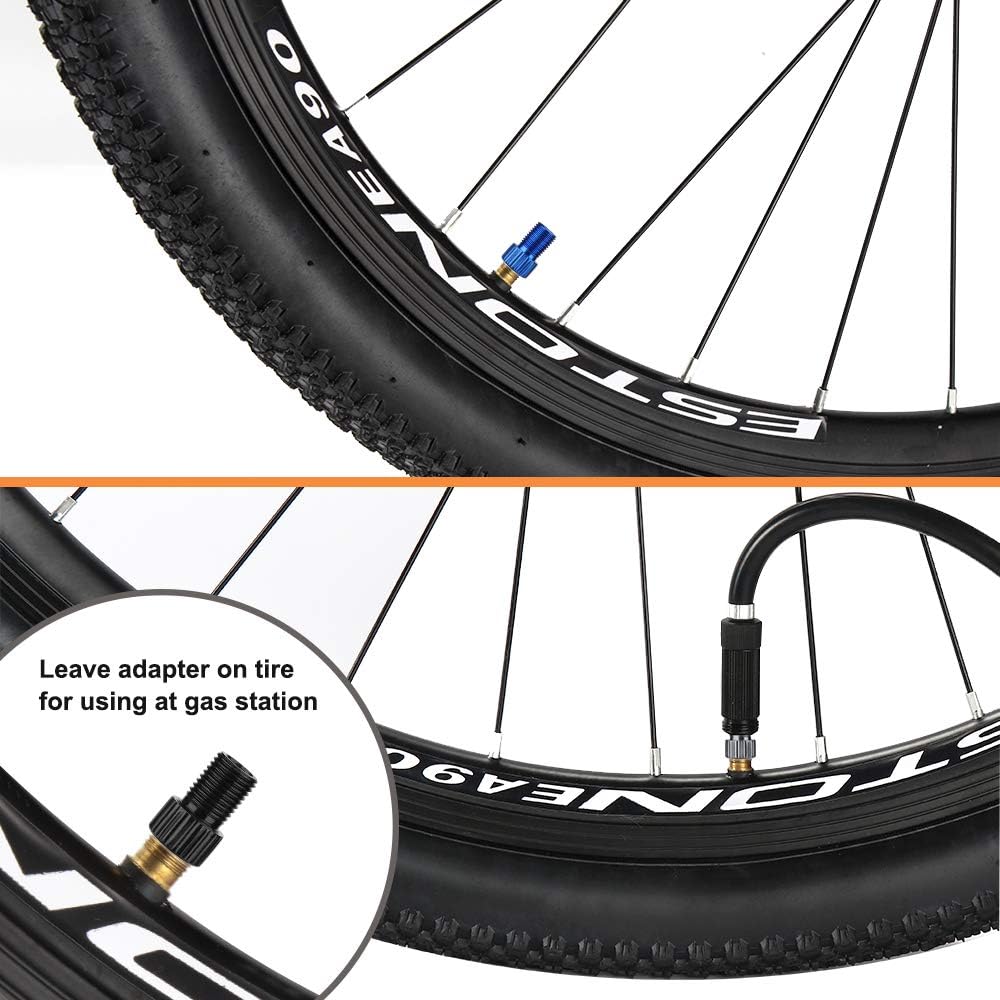
Copyright © Bike Shepherd 2023
Biketoworkday is supported by its audience. When you buy through our links, we may earn an affiliate commission. Learn more
Written by Gary Johnson / Fact checked by Henry Speciale
Most of the time, you can pump your bike tires in the comfort of your garage or a nearby bicycle shop using either a static floor pump or a portable mini-pump.
However, suppose you like biking in the great outdoors, especially on natural, isolated terrains, where there are no nearby places to pump up a bike tire. In that case, it will be very dangerous if you have accrued a deflated bike tire. This will make your cycling trip a disaster instead of a fulfilling activity.
This will make your cycling trip a disaster instead of a fulfilling activity.
Therefore, learning how to pump a bike tire without a pump is important know-how for nature cycling enthusiasts. Read on below.
Table of Contents
This method is the most popular for cycling enthusiasts due to its simplicity.
One drawback of this method is that this is a temporary fix, and real air must be pumped as soon as possible because CO2 disappears quickly.
What you will need
Steps for putting air in bike tires using a CO2 cartridge
Step 1.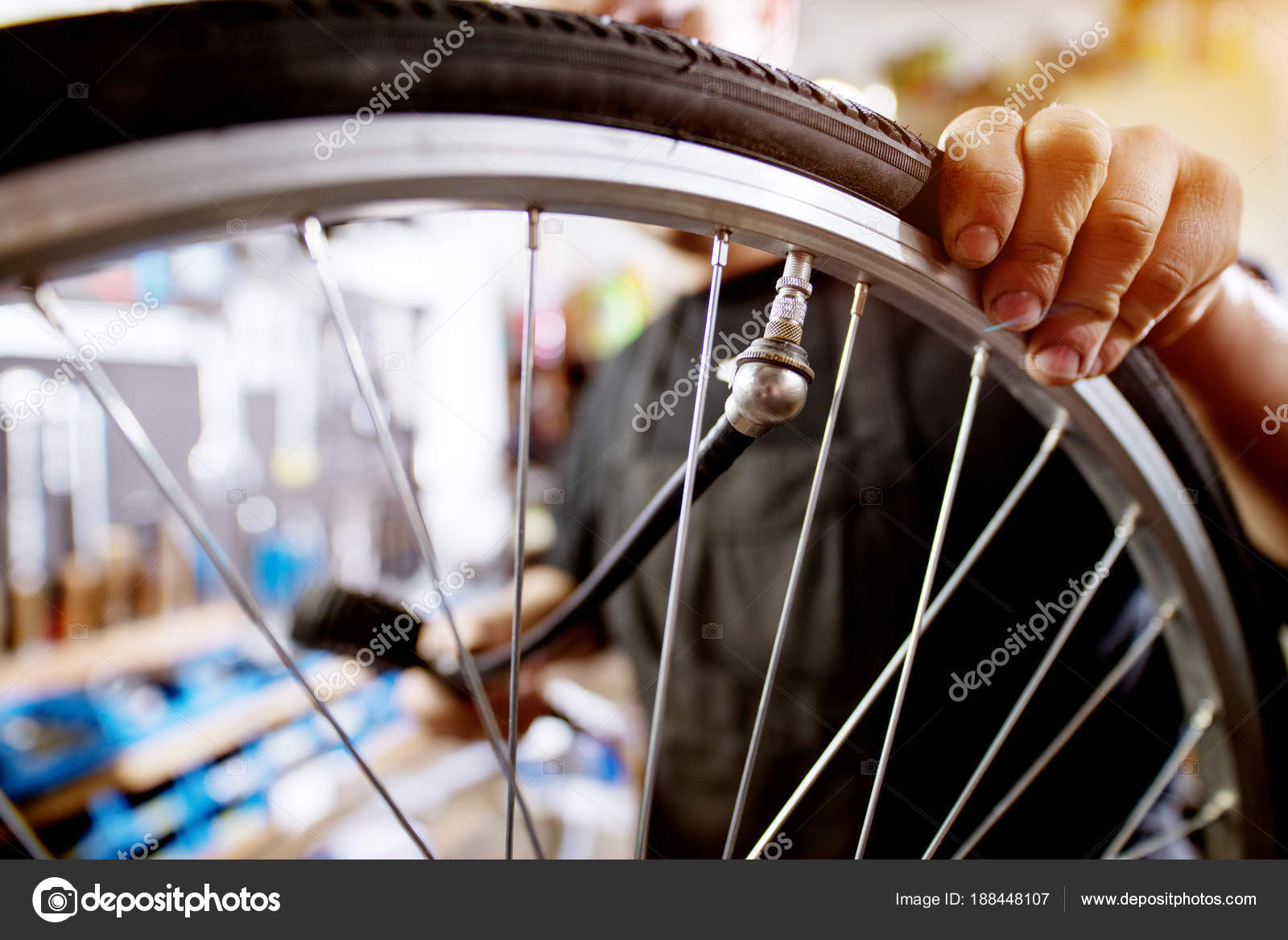 Remove the dust cap
Remove the dust cap
There is a dust cap to avoid mixing dust and particles with pressurized air in the bike tire. So, simply remove it and put it in a safe place.
Step 2. Check the Tire then Connect the Inflator Head to the Cartridge
Check the Tire and tube to see if they still work before inflating. After that, connect the inflator head to the CO2 cartridge neck.
Step 3. Remove the Inflator Head from the Valve
Carefully remove the inflator head from the bicycle valve to avoid excess air leaking from the tire.
Step 4. Return the dust cap
Retrieve the dust cap that you removed in the first step. Please put it back on the tip of the valve.
Cover the tip until there is no more space between the tip of the dust cap and the bicycle valve. Then, you are good to go.
Second Method: Manual PumpingIf you have no pumping equipment (e.g. CO2 canister, mini-pump, etc.), one way to pump up a bike tire is simply to do manual pumping. This method requires you to use your mouth as an inflator.
This may not be hygienic, but it is a viable method and may save your tire and your biking adventure. However, this is also a temporary fix.
What you will need
In order for you to pump air into a bike tire with this method, you only need a clean cloth or your shirt to clean the valve.
Steps for putting air on the bike using Manual Pumping
Step 1. Remove the dust cap
Simply remove the valve cover and put it in a safe place.
Step 2. Clean the valve
Clean the parts of the valve that will be in contact with the mouth using a clean cloth or your shirt.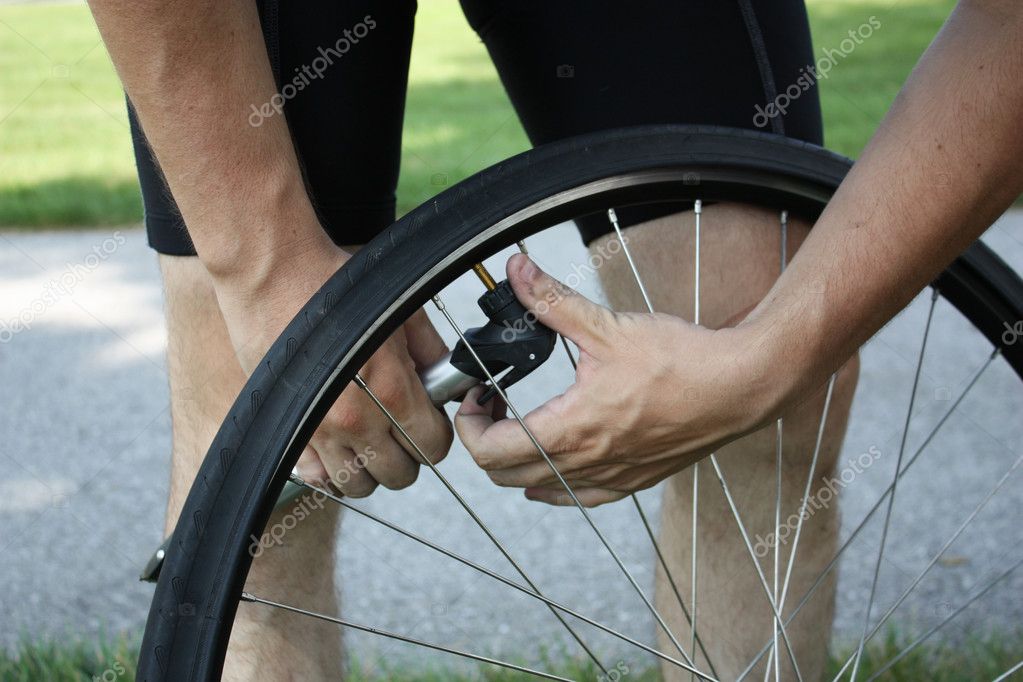
Step 3. Pump Air into the valve using your mouth
Start the process by blowing a little air into the tire from the bicycle valve. After that, check if the tire is aligned with the rim. If not, make sure to adjust it to achieve the correct position.
After the initial pump, simply continue the process until reaching the proper pressure and blow up the tire.
Step 4. Return the dust cap
Put back the dust cap to the tip of the valve.
Cover the tip until there is no more space between the tip of the dust cap and the bicycle valve.
Third Method: DIY PumpingIf you have no pump but some tools and equipment in your vicinity, a DIY pumping method may suffice.
What you will need
Steps on DIY Pumping
Step 1.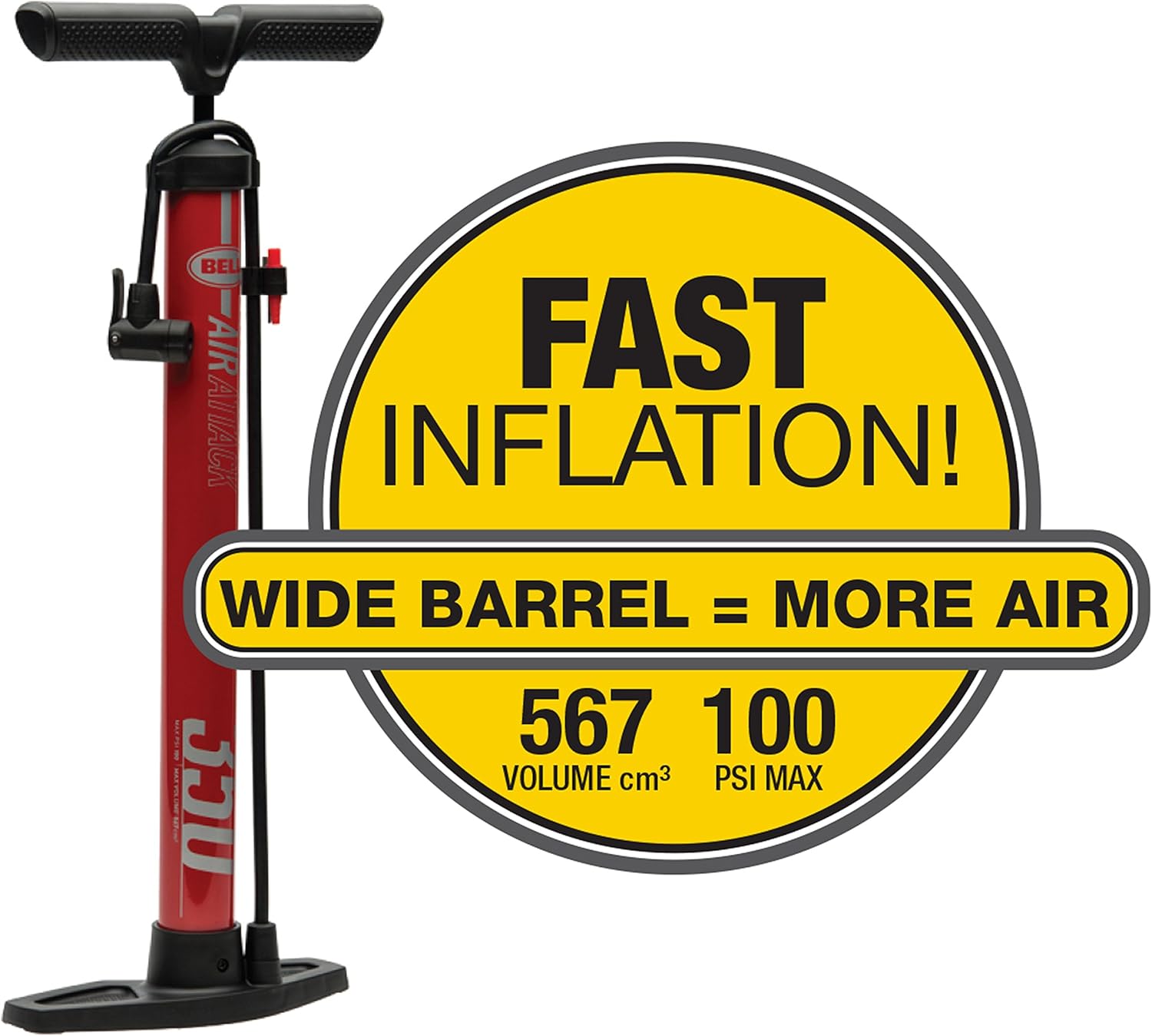 Remove the dust cap
Remove the dust cap
Step 2. Connect your valve adaptor to the pressurized air source
This step requires thinking because an air leakage must be avoided. Make sure that the adaptor is an exact interface to the mouth of the pressurized air source container.
Step 3. Connect the valve adaptor to the tire valve
If the adaptor is placed correctly, the air transfer will start. Continue putting air into the tire until the desired tire pressure is obtained or the pressurized air source is depleted.
Step 4. Remove the valve adaptor the tire valve
Carefully remove the valve adaptor. It is important to make sure the removal process clamps the tire valve seal to avoid air leakage.
Step 5. Return the dust cap
Cover the tip until there is no more space between the tip of the dust cap and the bicycle valve.
ConclusionThe most common methods on how to pump a bike tire without a pump are described in this article. Follow the steps carefully not to blow up a bike tire.
If you understand the different methods to inflate a bike tire without a pump and the steps for each method that are explained in this article, you can bike wherever without a problem. Do you find the article helpful? Feel free to share the article with those who need the guide.
Gary Johnson
“I ride my bike to work for years, but is that enough? Our carelessness towards our surroundings has taken a toll on the environment. And now, everyone is responsible for changes; even the most minor contribution is counted. With this hope and spirit, I started with my partner to establish Biketoworkday to help more individuals commute to their work sites on their bikes.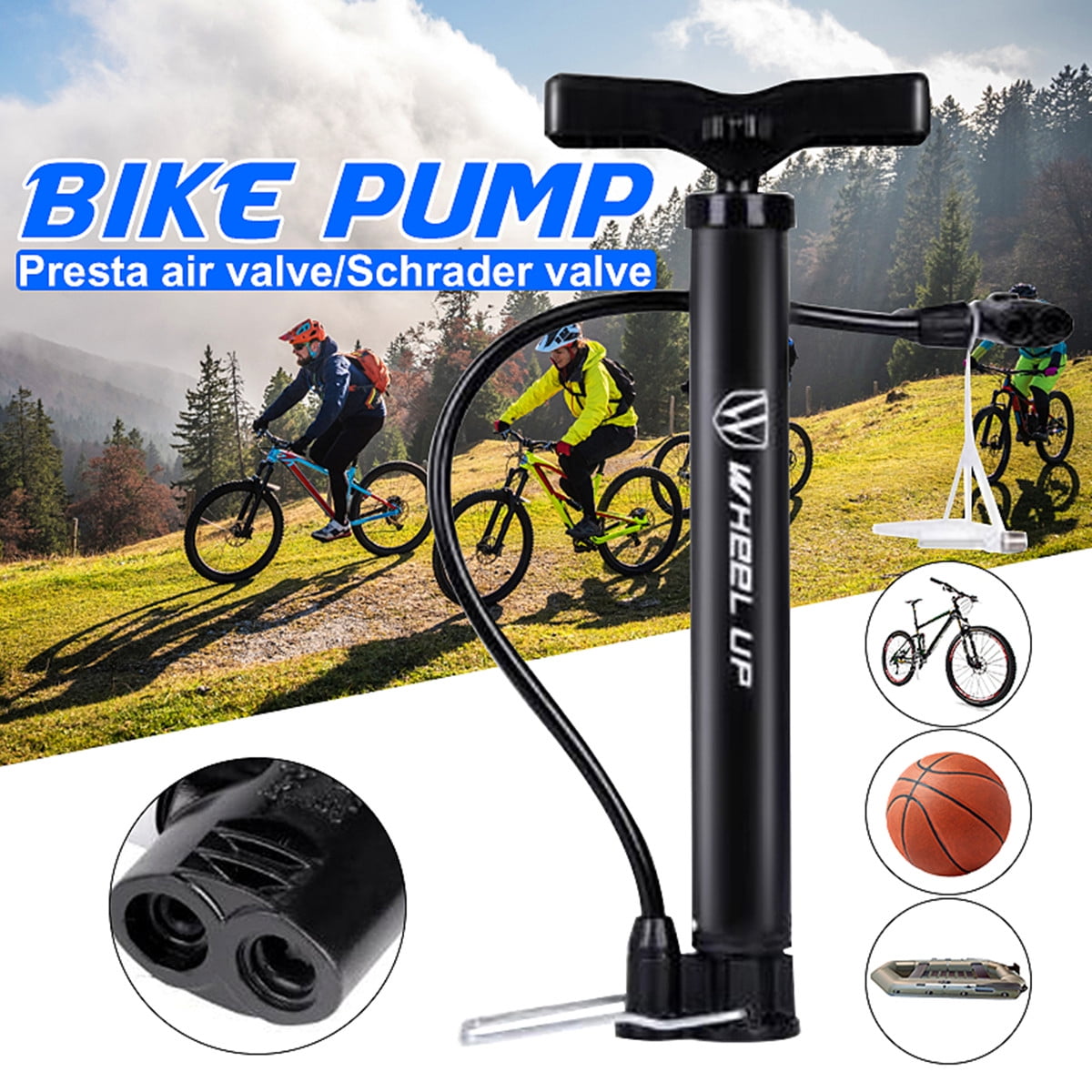 ”
”
A lot of articles on the topic "How to pump up a tire without a compressor" roam the Internet. Which of these techniques are effective and safe, and which ones should not be resorted to, says the expert "Behind the wheel".
If I change wheels, do I need to balance them every season?
Inflating a tire in the city is not a problem. There will always be a thrifty car enthusiast nearby who will lend a compressor. In extreme cases, you can drive to the nearest auto parts store and buy this useful device. But if the need to pump up the wheel caught on a long journey, on a deserted track, you will have to use your ingenuity.
A very banal way is to turn to professionals, that is, truck drivers. The fact is that any truck with pneumatic brakes can supply dried and purified air with high pressure through a hose that a thrifty truck driver always has with him.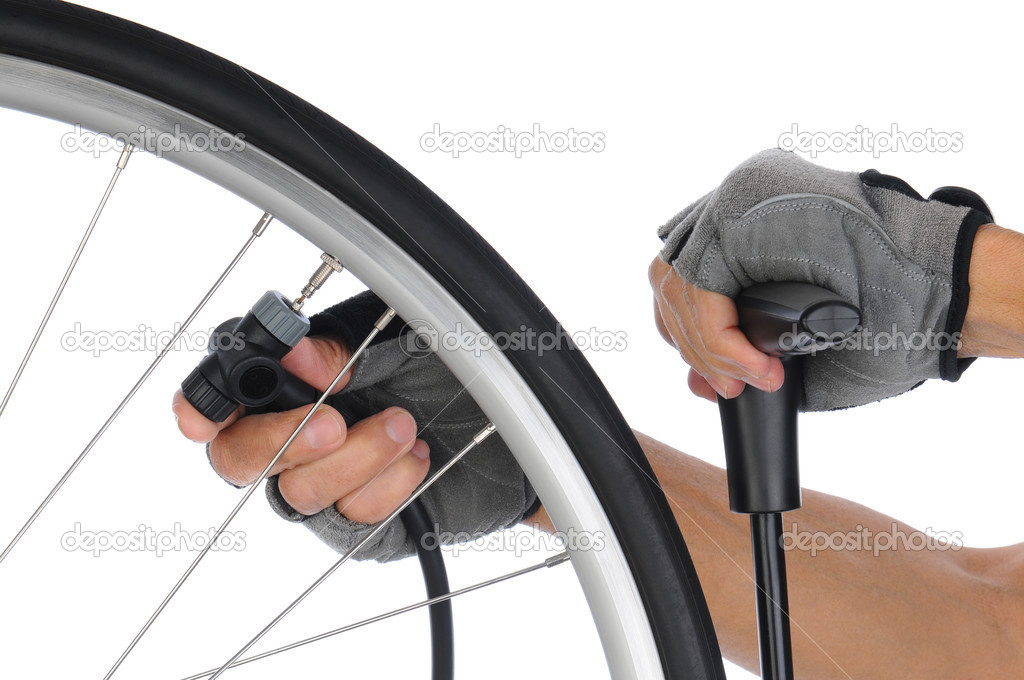
Many gas stations now have tire inflators, and perhaps the easiest way is to hitch a wheel to it and return to your car the same way. If all of the above did not work, then read about the tricks that we personally tested for effectiveness:
Attaching the can (any) to the nipple is not that difficult. The pressure inside the cylinder is 1.8-2.8 bar. It is important that the content does not dissolve the rubber and does not harden, such as building foam.
Here, of course, canisters with compressed air are good, designed for blowing, for example, office equipment. But the internal volume of the wheel of a small class car is about 20-25 liters. For pumping, you will need several boxes of spray cans. Unacceptable!
It is possible to connect the tire valve to the brake master cylinder connection after draining the reservoir. After that, we begin to press the brake pedal as is usually done when bleeding the brakes when replacing the brake fluid. To inflate the wheel, it will take a gigantic number of clicks. Unacceptable!
To inflate the wheel, it will take a gigantic number of clicks. Unacceptable!
Connect the hose to the air path after the turbocharger. The boost pressure in the line between the compressor and the intake valves of conventional (non-sport) engines is not enough to inflate the wheel. No matter how hard you go, it's unacceptable!
Advanced car enthusiasts know the method of transferring the bead ring over the hump of the rim using an explosion of fuel vapor. The Internet is full of videos on this topic.
It is usually advised to unscrew the spool from the valve. I wonder what will happen if this is not done? We need to keep up the pressure. We conducted an experiment and got an unsatisfactory result. With this method, it is possible to provide not much pressure in the wheel - about 0.2 bar. The method really allows you to brilliantly cope with the task of transferring the sidewall through the hump, but it is not suitable for pumping!
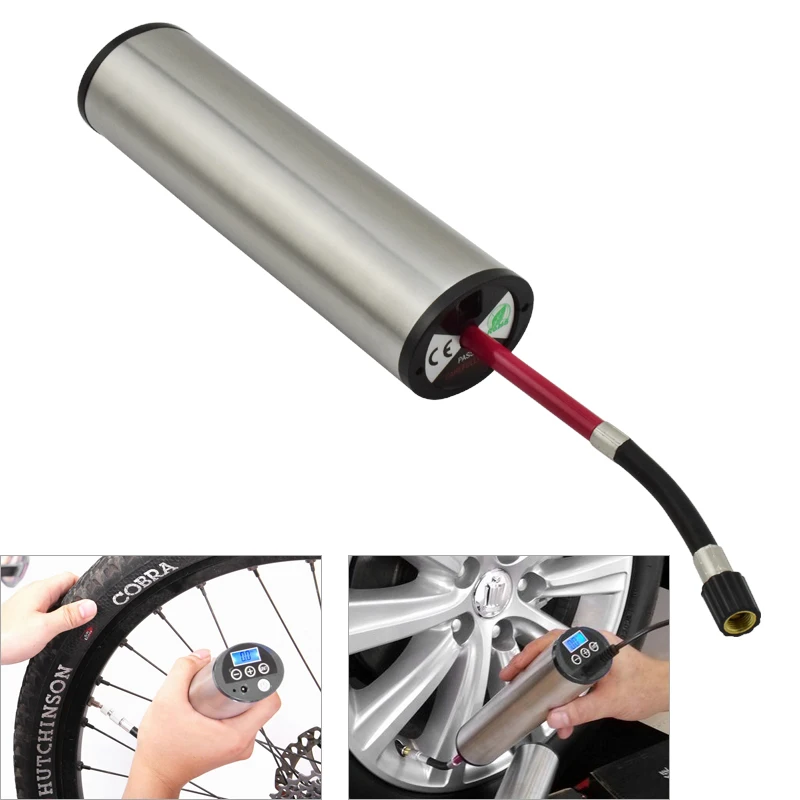 Fire extinguisher
Fire extinguisher And this is perhaps the most unusual way to inflate a tire. Having carried out an experiment with a large 6-kilogram fire extinguisher, it was possible to raise the pressure by a completely ridiculous amount of a couple of tenths of a bar. And this despite the inverted spool. Everything around was covered with a rather nasty powder. Unacceptable!
The average car owner usually has a powder-type fire extinguisher in the trunk. A powder fire extinguisher of a fairly large volume worked out of hand badly. The wheel has not been pumped up yet.
If you can attach a hose to the exhaust pipe, then you can inflate the wheel in this way. The engine is able to provide a pressure of two or more bar with a sealed exhaust system and if you “give it a gas”. The method is acceptable, but only as a last resort. The fact is that with this method, the catalytic converter, and even the corrugation of the exhaust system, may suffer.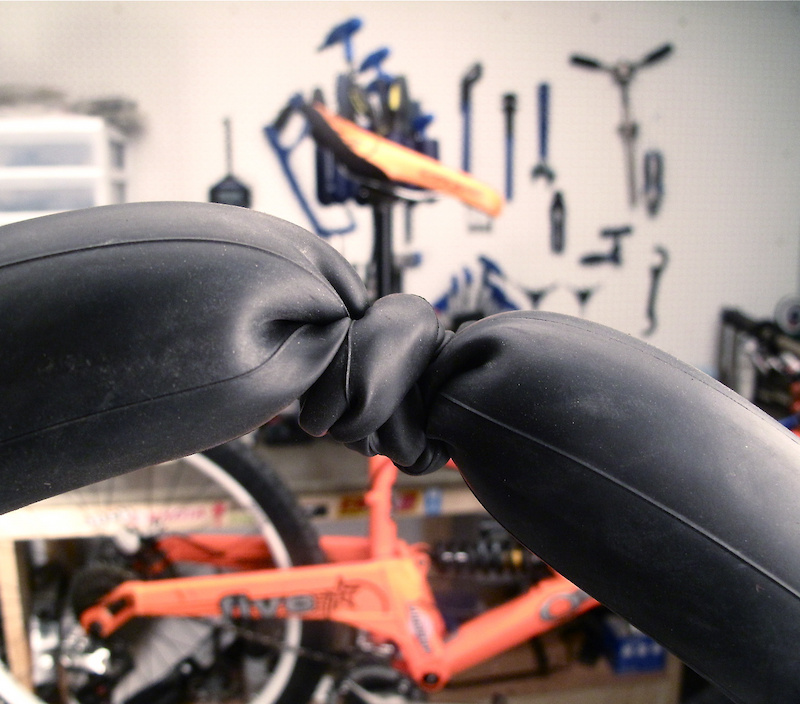
The hardest part was getting the tight connection between the thin hose and the exhaust pipe. A variety of caps from bottles, washers, plumbing drives can go into business. What will be at hand. Electrical tape will help seal the connection.
If you want to pump up a wheel, jack the car up! Debunking the Myth
With the help of a hose it is possible to transfer part of the air from the other wheels to the one we need to inflate. The method is complicated, because the valve mechanism will interfere with such a procedure. If we turn out the spools, we risk leaving several wheels without air. But even if you manage to get by with minimal losses, the pressure in all the wheels will turn out to be insufficient. In the best case, 75% of the pressure will remain in the wheels. Without preliminary preparation, which consists in assembling a hose with two tips like those installed on the compressor, we do not recommend trying this method!
***
Alternative ways to inflate tires are complicated, inconvenient, require advance preparation and can damage the vehicle. Therefore, we advise you to always have a serviceable and inflated spare tire. And just in case, you should carry a portable electric compressor with you. Useful not for yourself, but for a less thrifty motorist.
Therefore, we advise you to always have a serviceable and inflated spare tire. And just in case, you should carry a portable electric compressor with you. Useful not for yourself, but for a less thrifty motorist.
Content of Article
Good day everyone! Every motorist knows about the so-called motorist kit, which must include a compressor, that is, a pump. But sometimes situations arise when you have to look for alternative options for how to pump up a wheel without a pump.
But sometimes situations arise when you have to look for alternative options for how to pump up a wheel without a pump.
I will say right away that it is not recommended to allow such situations. Only a full-fledged car pump can restore a disassembled wheel, restore the necessary pressure to it and drive further by car at normal speed.
Today we will learn about the methods used in the field and at home. They are suitable if you need to pump up the tires of a stroller or a bike. For a bicycle, pumping from a ball gives an excellent result. But for a car, and even more so for pumping on a truck, there is a big doubt about the effectiveness of these methods.
Some car enthusiasts recommend using aerosol cans to inflate a flat tire. Connecting them to the tire nipple is not so difficult.
Here it must be taken into account that often the internal pressure in such cartridges is from 1.8 to 2.8 bar. How much or how little this is depends on the specific wheel that needs pumping.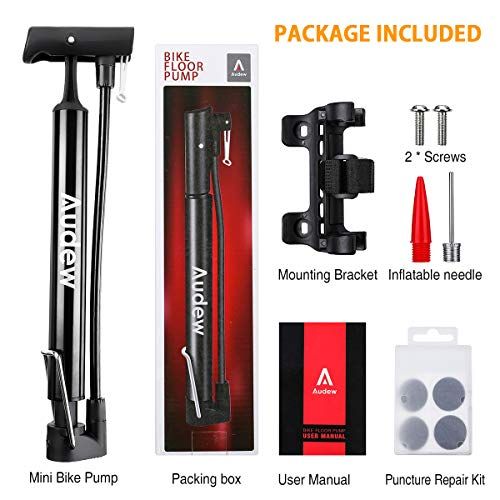 When choosing an aerosol, consider the contents of this can, its composition. Some substances can corrode rubber or harden. That is, the option using building foam is unlikely to work. Only in the most extreme case, when the wheel will be sent to a landfill at the place of arrival.
When choosing an aerosol, consider the contents of this can, its composition. Some substances can corrode rubber or harden. That is, the option using building foam is unlikely to work. Only in the most extreme case, when the wheel will be sent to a landfill at the place of arrival.
Most effective from canisters that are used for purge. They are filled with compressed air.
But understand one simple thing here. The internal volume of a car wheel is approximately 20-25 liters. Yes, with the help of compressed air in cylinders, in theory, you can pump up a wheel without a pressure gauge and a compressor. But then you have to spend a few boxes of spray cans.
Next in line is the use of the brake system from your own car.
With its help, it will definitely not be possible to quickly pump up a tire.
The meaning is as follows. It is required to connect the valve from the tire to the fitting of the brake master cylinder on the vehicle.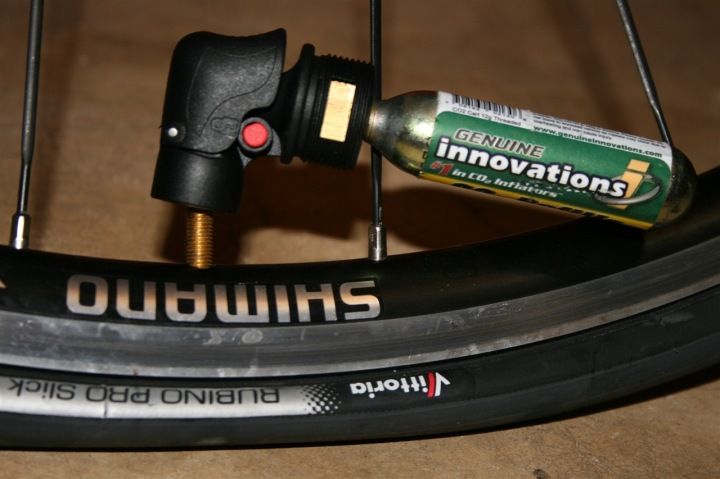 Before doing this, be sure to empty the brake fluid reservoir itself. Then the driver needs to start actively pressing the brake pedal to the floor, release it and repeat these gestures. Similarly, the brake is pumped when the brake fluid is changed. Just get ready for the fact that such a swap will take a whole lot of time and a huge amount of effort.
Before doing this, be sure to empty the brake fluid reservoir itself. Then the driver needs to start actively pressing the brake pedal to the floor, release it and repeat these gestures. Similarly, the brake is pumped when the brake fluid is changed. Just get ready for the fact that such a swap will take a whole lot of time and a huge amount of effort.
Acceptability of this method is quite low. Although in terms of safety and efficiency, this is one of the best options when a compressor or hand pump is not available.
Relevant for those who have a turbocharger installed in their car.
Turbocharged cars are quite common, so it would be right to talk about this method.
The trick here is to connect the hose to the air path directly after the turbocharger. But here, too, there is a catch. In theory, there is pressure between the compressor and the intake valves, and quite high. But these values \u200b\u200bare still not enough on ordinary cars to provide wheel inflation. No matter how much you press the gas pedal, the pressure inside the tire will not increase. You can get some air in there.
No matter how much you press the gas pedal, the pressure inside the tire will not increase. You can get some air in there.
But still, you can't call it a full-fledged pump.
An exception may be sports cars, where there is a really powerful turbocharger. Then there are chances.
There are many videos on the net showing how desperate car enthusiasts, otherwise you can’t call them, inflate car tires without a hose.
They do it with gasoline. Here you will need to unscrew the spool on the valve. Otherwise, the wheel will simply break. The point is to pour a small amount of gasoline into the tire, then set it on fire. When a fiery torch is brought up, the fuel ignites, a lot of pressure appears, which, in theory, should pump up the wheel. But this is just a theory. In practice, things are much worse.
The use of pumping fuel is not recommended. This is extremely dangerous and ineffective. So here it’s better to just watch a video about this method, but in no case do experiments on your own.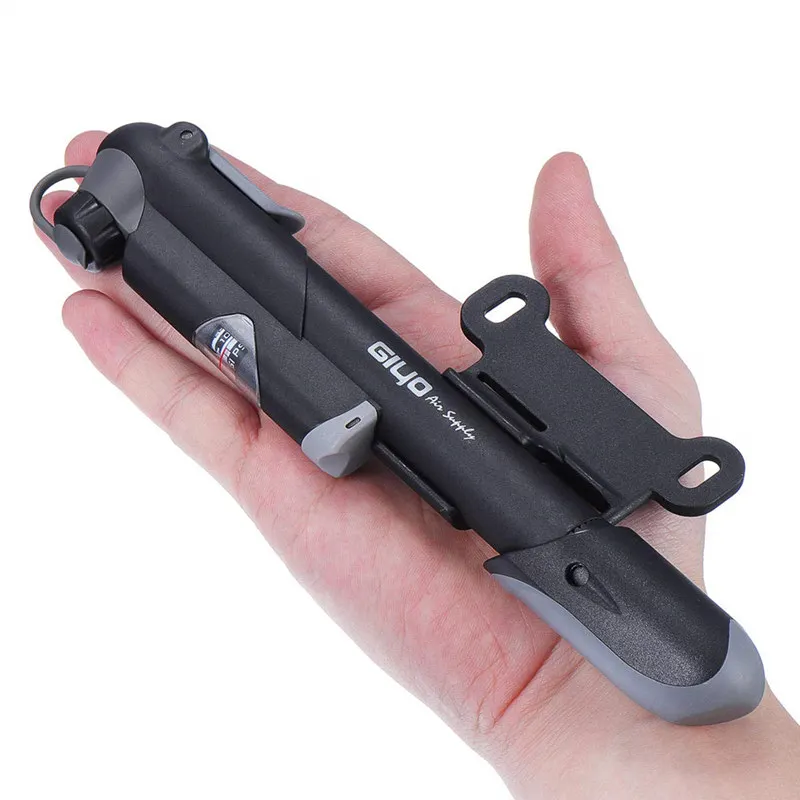
When choosing a car fire extinguisher, few drivers thought about using this device for tire inflation.
Quite an unusual method that has the right to exist. Numerous experiments with standard 6 kg fire extinguishers gave disappointing results. With their help, it was possible to raise the pressure literally by 0.2-0.5 bar. And this despite the fact that the spool was previously unscrewed.
If most of the methods presented here work on a bicycle, but are unlikely to help much on a car, then the next option is a little different.
Here you will need to connect the hose to the exhaust pipe and the wheel. The engine can indeed create the necessary pressure inside the sealed system, that is, the tires of the car. Just enough to work the gas pedal properly.
However, this method is recommended only as a last resort. Otherwise, you risk damaging the catalyst, or the exhaust gas system. Eliminating the consequences will be very expensive.